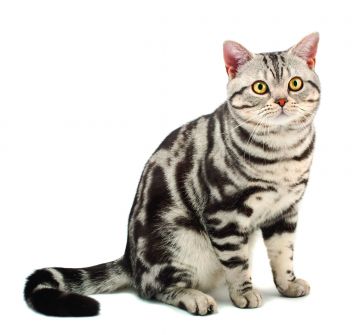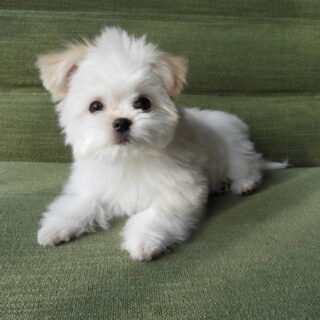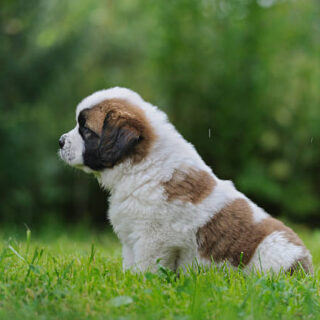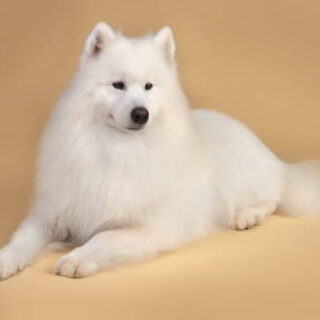American Shorthair
The American Shorthair is a true breed of working cat. The general effect is that of a strongly built, well balanced, symmetrical cat with conformation indicating power, endurance, and agility.
American Shorthair Personality
When describing the American Shorthair, the expression happy medium springs to mind. These all-American cats are medium in size, build, type, and temperament; they are neither too big nor too small, not overly cuddly nor distant, neither couch potatoes nor hyperactive.
The American Shorthair is the perfect breed for those who want a cat that enjoys being in your lap but not in your face. American Shorthairs are known for their adaptable temperaments and quiet voices; they are sociable, easily trained, and adapt well to other animals and children.
They generally do not like to be picked up; like their Pilgrim companions who left England to find freedom, they cherish their independence. Because of the American Shorthairs history as a working cat, they make great companions in terms of health, strength, and vitality.
American Shorthairs enjoy a good romp with their favorite humans, but can amuse themselves with a ball of paper just as well. They tend to remain active and playful well into their old age. Due to their barn cat background, ASHs have strong hunting instincts and enjoy catching and killing catnip miceand real ones, too, if given access to the great outdoors, something thats discouraged by breeders.
Your indoor ASH will put presents on your pillow, usually well-killed catnip mice, and proudly wait for the well-deserved petting and praise.
American Shorthair History
No one knows exactly when domestic cats first set paw in America. However, its clear that cats arrived with the Europeans settlers, since America has no indigenous cat species from which domestic cats could have developed.
Since cats were often kept aboard ships to protect the grain and other foodstuffs from rodents, its not surprising that domestic cats first appeared in North America when the Europeans arrived; North America has no indigenous species from which domestic cats could have developed. Domestic cats may have been catting around the New World since the 1500s.
Unquestionably, domestic cats were present in Jamestown, the first permanent British colony in the New World, since a written record dating from 1609 mentions the colonys cats. On July 4, 1776, when the members of the Continental Congress assembled in Philadelphia to adopt the Declaration of Independence, the American Shorthairs ancestors were around to witness the historic event.
Physical Attributes of American Shorthair
Body
Solidly built, powerful, and muscular with well-developed shoulders, chest, and hindquarters. Back broad, straight and level.
Head
Large, with full-cheeked face giving impression of an oblong just slightly longer than wide. Sweet, open expression. Forehead forms smooth, moderately convex continuous curve flowing over top of head into neck. No dome between ears. Nose medium length, same width for entire length. Gentle curved rise from bridge of nose to forehead.
Ears
Medium size, slightly rounded at tips, not unduly open at base. Distance between ears, measured from lower inner corners, twice distance between eyes.
Eyes of American Shorthair
Large and wide with upper lid shaped like half an almond cut lengthwise and lower lid shaped in fully rounded curve. At least width of one eye between eyes. Outer corners set very slightly higher than inner corners. Bright, clear, and alert.
Legs & Paws
Medium in length and bone, heavily muscled. Viewed from rear, all four legs straight and parallel with paws facing forward. Paws firm, full and rounded, with heavy pads. Toes five in front, four behind.
Tail
Medium long, heavy at base, tapering to abrupt blunt end in appearance but with normal tapering final vertebrae.
Coat
Short, thick, even, and hard in texture. Regional and seasonal variation in coat thickness allowed. Coat dense enough to protect from moisture, cold, and superficial skin injuries.
Color
Many colors and patterns including solid; shaded; smoke; particolor; bicolor; tortoiseshell; cameo; van; tabby (classic, mackerel, and patched); tabby and white.






